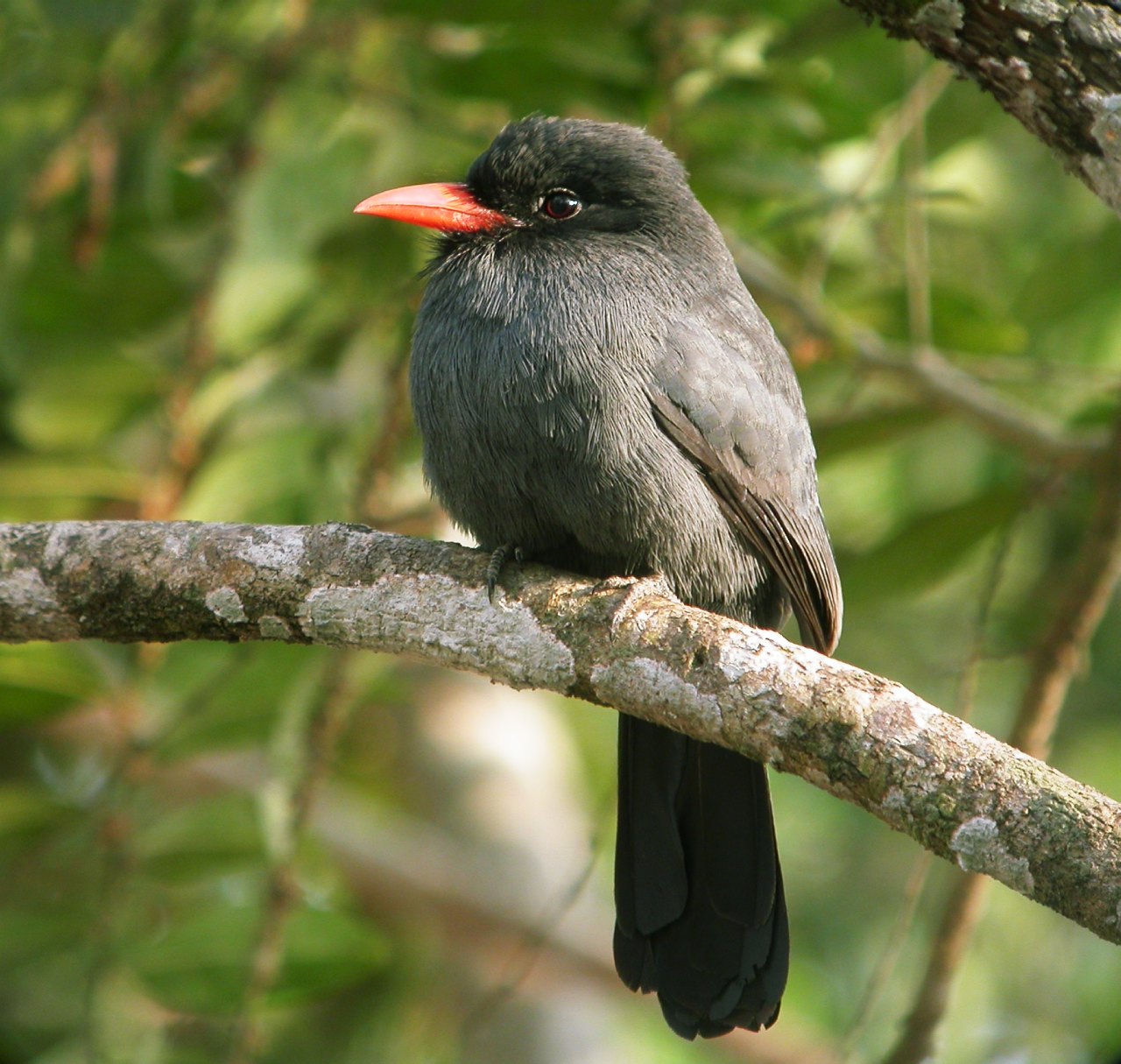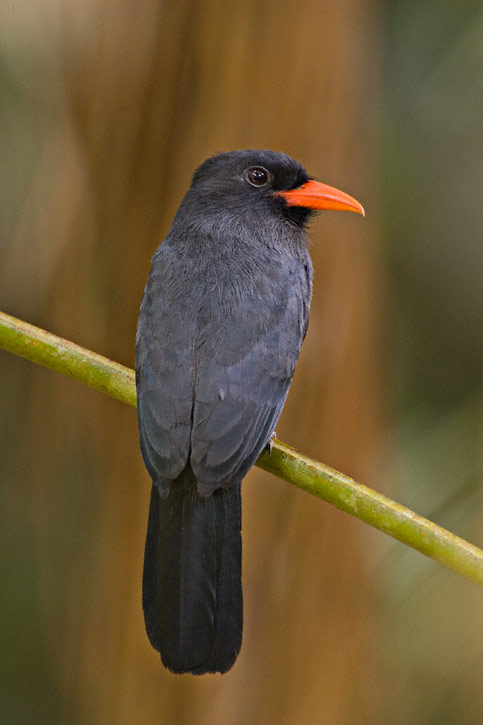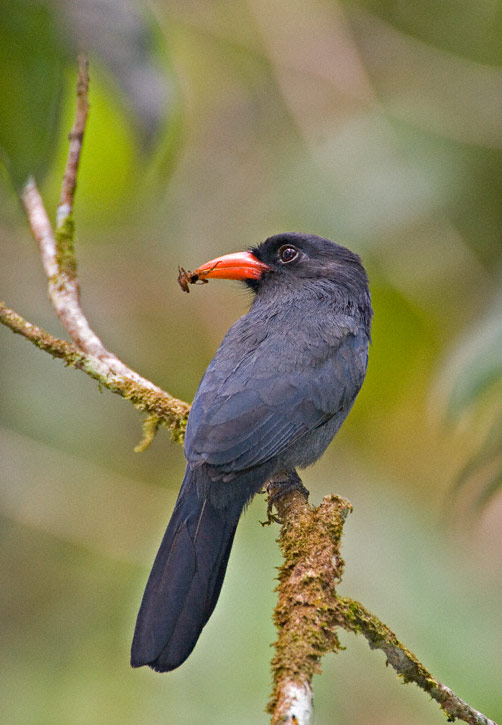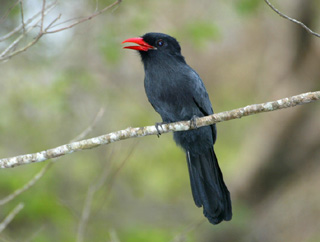
Monasa nigrifrons
TAXONOMY
Bucco nigrifrons Spix, 1824, Rio Solimхes, Brazil. Two subspecies
recognized.
OTHER COMMON NAMES
French: Barbacou unicolore; German: Schwarzstirntrappist;
Spanish: Manja Unicolor.
PHYSICAL CHARACTERISTICS
10.2–11.4 in (26–29 cm); 2.4–3.5 oz (68–98 g). Relatively slender
and long tailed for a puffbird, entirely sooty black, darker
around bill and paler ventrally. Bill bright red and legs black.
DISTRIBUTION
M. n. nigrifrons: southeastern Colombia, eastern Ecuador, eastern
Peru, much of Amazonian Brazil; M. n. canescens: eastern
Bolivia.
HABITAT
Strong affinity to tall forest or regrowth on lakesides, riversides,
and floodplains; also igapу and varzea, but generally absent
from terra-firme forest.
BEHAVIOR
Group territorial, up to six individuals constantly foraging together
noisily, often conspicuous in mixed-species foraging
flocks.
FEEDING ECOLOGY AND DIET
Groups perch from lower strata to subcanopy, primarily taking
insect prey (Lepidoptera, Orthoptera, Hymenoptera) in flight,
but regularly from ground or foliage. Also reported catching
small lizards, and following army ant swarms and primate
troops to feed on flushed prey.
REPRODUCTIVE BIOLOGY
Lays about 3 eggs in nest burrows dug into level or slightly
sloping ground. Incubation and fledging periods unknown.
Presumed to be a cooperative breeder as groups visit nest area.
CONSERVATION STATUS
Not threatened. A common bird throughout most of its range.
SIGNIFICANCE TO HUMANS
None known.
Photo Gallery of - Black-fronted nunbird




 Animalia Life
Animalia Life